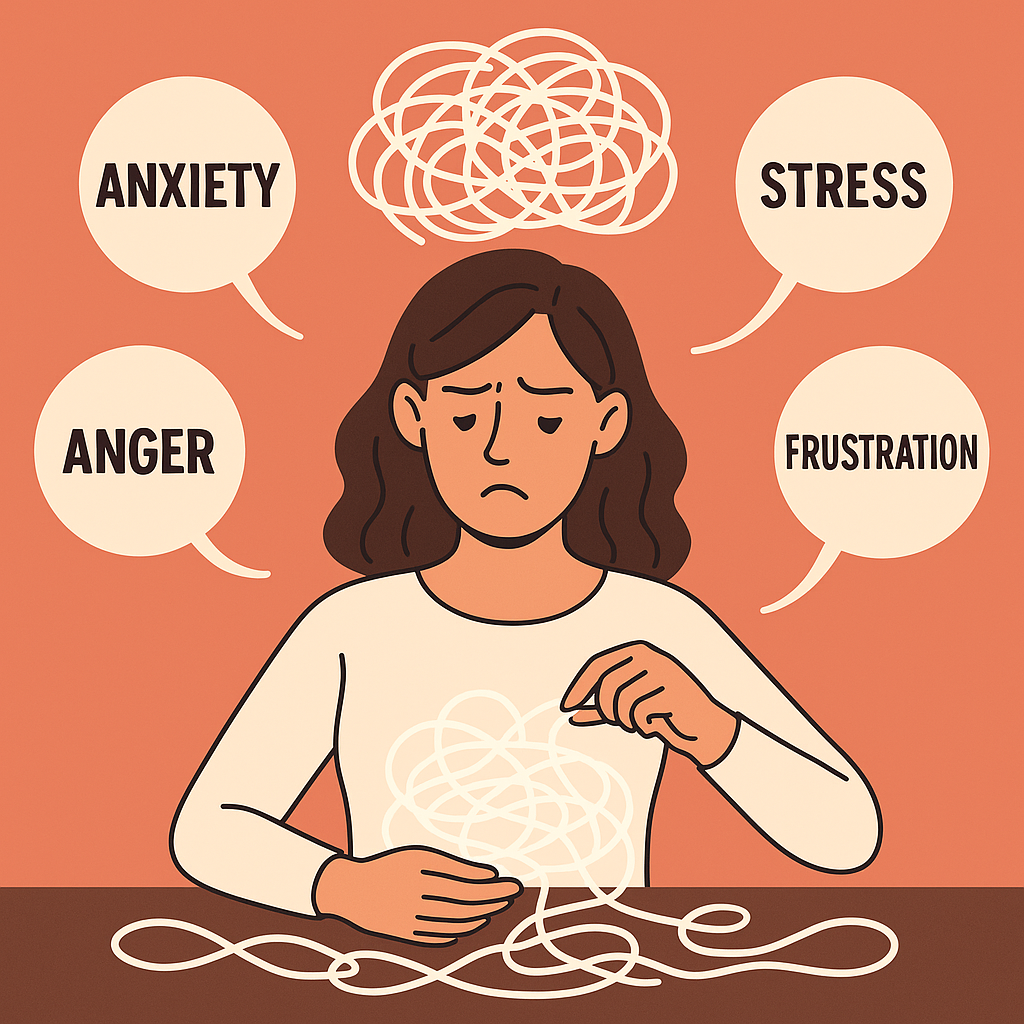
The Body-Emotion Connection: Your Brain's Predictive Power
Discover how your brain constructs emotions moment by moment—and why this revolutionary understanding changes everything about emotional wellness.
Science Update: The Emotion Revolution
The old model is wrong. For decades, we believed emotions were hardwired circuits in the brain—that fear, anger, and joy had specific "fingerprints" in the body. Modern neuroscience has shattered this myth.
Leading researcher Lisa Feldman Barrett and her team have proven through thousands of brain scans and studies that emotions are constructed by your brain (this is fascinating), not triggered by fixed circuits.
This isn't just academic theory - it's a paradigm shift backed by meta-analyses of hundreds of studies, validated across cultures, and confirmed by the latest brain imaging technology. Have some fun, play the emotional detective game.
How Your Brain Really Creates Emotions
Your brain is constantly running a prediction machine, using three key ingredients to construct every emotion you experience:
Body Budget (Interoception)
Your brain tracks energy needs, inflammation, hydration, and thousands of internal signals—creating what you feel as mood, energy, or comfort.
Past Experience
Every emotion you've ever felt becomes data your brain uses to predict what you should feel now.
Current Context
Your environment, the people around you, and the situation all shape how your brain interprets body signals.
The Revolutionary Insight
That racing heart? It's not "fear" or "excitement" until your brain decides which one fits best. The same physical sensation can become anxiety before a test or excitement before a date. You're not at the mercy of your emotions—you're their architect.
Decoding Your Body's Signals
While emotions aren't hardwired, your brain does create predictable patterns based on your experiences. Understanding these common patterns helps you recognize when your brain is constructing an emotion—giving you the power to influence the process.
Remember: These aren't fixed reactions. They're learned associations your brain uses as shortcuts. The more you understand them, the more choice you have in how you experience emotions.
When Your Brain Predicts Threat (Often Labeled "Anxiety")
When Your Brain Predicts Injustice (Often Labeled "Anger")
When Your Brain Predicts Loss (Often Labeled "Sadness")
When Your Brain Predicts Immediate Danger (Often Labeled "Fear")
When Your Brain Predicts Reward (Often Labeled "Joy")
When Your Brain Predicts Social Threat (Often Labeled "Shame")
When Your Brain Predicts Moral Violation (Often Labeled "Guilt")
When Your Brain Predicts Contamination (Often Labeled "Disgust")
When Your Brain Predicts Connection (Often Labeled "Love")
When Your Brain Predicts Overload (Often Labeled "Overwhelm")
Transform Your Emotional Experience
Understanding that emotions are constructed—not hardwired—is liberating. It means you're not broken when you feel "wrong" emotions, and you're not at the mercy of uncontrollable feelings. Here's how to use this knowledge:
The Power of Recategorization
When you feel that familiar stomach flutter, your brain might predict "anxiety" based on past experience. But you can actively recategorize: "This could also be excitement about the challenge ahead." Same sensation, different emotion, different outcome.
Your Daily Emotion Construction Toolkit
Body Budget Check
Throughout the day, ask "What is my body needing?" Often, emotional distress is your brain's interpretation of hunger, dehydration, or fatigue.
Context Awareness
Notice your environment. Your brain uses every cue—lighting, sounds, people—to predict what emotion to construct.
Prediction Updating
When you notice familiar body sensations, pause and consider: "What else could this be?" Give your brain new options.
Emotion Granularity
Build a richer emotional vocabulary. Instead of "bad," try "disappointed," "depleted," or "uncertain." More precise predictions lead to more adaptive responses.
The Science of Change
Barrett's research shows that people who understand emotion construction show:
- 30% better emotion regulation in laboratory tests
- Reduced anxiety and depression symptoms
- Improved decision-making under stress
- Enhanced relationship satisfaction
Emotions Aren't What You Think: Busting Old Myths
Why the Old Model Failed
For decades, scientists searched for the "fear circuit" or "anger center" in the brain. They found... nothing. No consistent neural fingerprint for any emotion exists. Meta-analyses of brain imaging studies show emotions don't live in specific brain regions—they're constructed by networks across your entire brain.
Old Myth vs. New Science
Your Next Steps
You now understand something revolutionary: emotions aren't happening to you—they're created by you. This knowledge is power. Every time you notice a body sensation and choose how to interpret it, you're literally rewiring your brain's predictive system.
Start Your Transformation Today
Begin with curiosity, not judgment. When you feel something intense:
- Notice where it lives in your body
- Consider what your brain might be predicting
Ask: "What else could this be?" Remember: You're not broken, you're human
Based on the groundbreaking research of Dr. Lisa Feldman Barrett and validated by thousands of neuroscience studies worldwide.